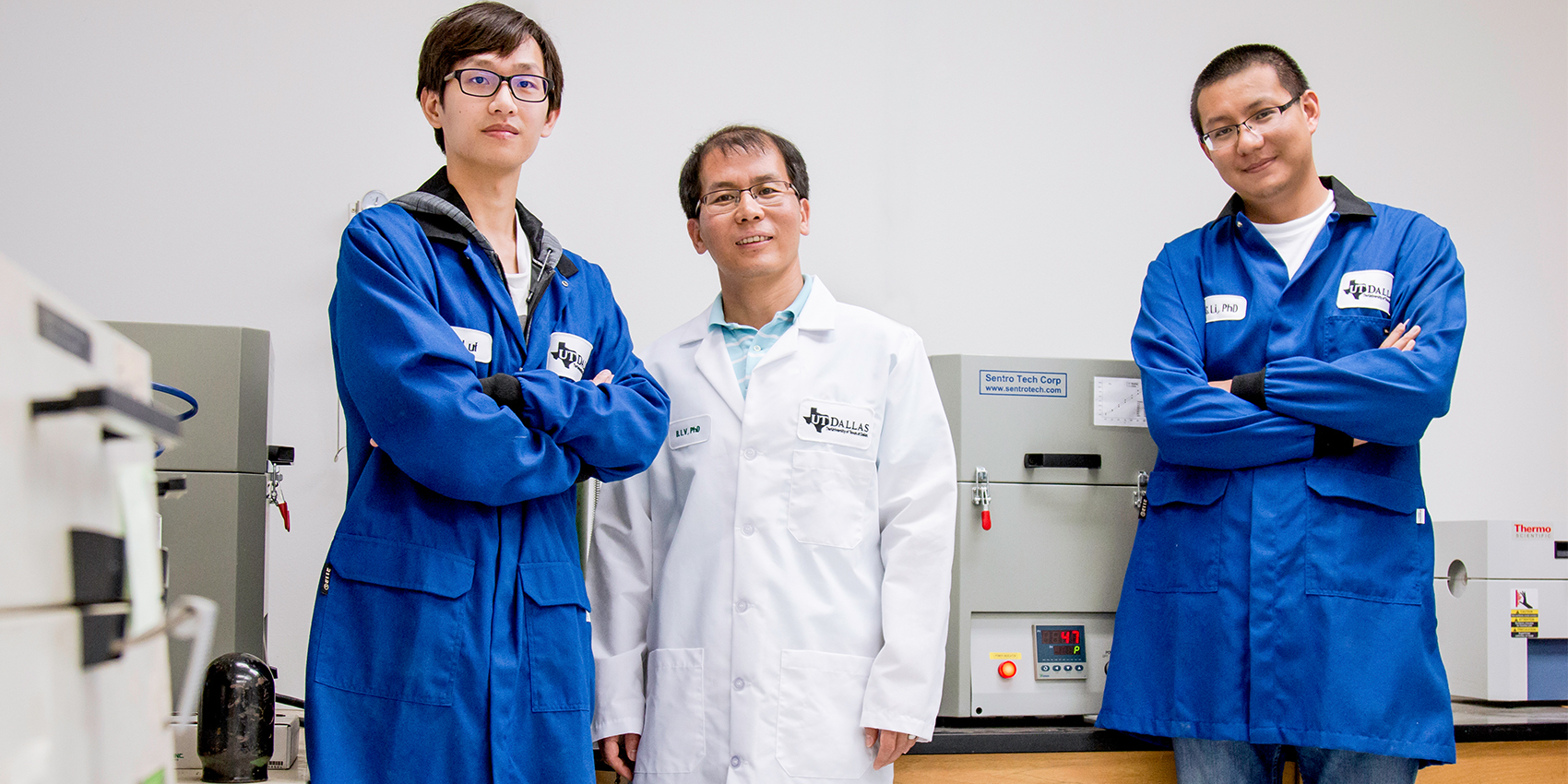UT Dallas researchers and a team of colleagues have created a potential solution to overheating electronics—heat-conducting crystals.
Whisking heat away from the circuitry in a computer’s innards to the outside environment is critical. Overheated computer chips can make programs run slow or freeze, shut the device down altogether or cause permanent damage.
The problem is that heat management for increasingly smaller and faster electronics is reaching a bottleneck. With current technology, there’s a limit to the amount of heat that can be dissipated from the inside out.
UTD researchers and their collaborators at the University of Illinois at Urbana-Champaign and the University of Houston have created a potential solution, described in a study published in the Aug. 10, 2018, issue of Science.
The team produced crystals of a semiconducting material called boron arsenide that have an extremely high thermal conductivity, a property that describes a material’s ability to transport heat.
“Heat management is very important for industries that rely on computer chips and transistors,” said Dr. Bing Lv, assistant professor of physics and a corresponding author of the study. “For high-powered, small electronics, we cannot use metal to dissipate heat because metal can cause a short circuit. We cannot apply cooling fans because those take up space. What we need is an inexpensive semiconductor that also disperses a lot of heat.”
Most of today’s computer chips are made of the element silicon, a crystalline semiconducting material that does an adequate job of dissipating heat. But silicon, in combination with other cooling technology incorporated into devices, can handle only so much.
In 2013 researchers at Boston College and the U.S. Naval Research Laboratory published research that predicted boron arsenide could potentially perform exceptionally well as a heat spreader. In 2015 Lv and his colleagues at the University of Houston successfully produced such boron arsenide crystals, but the material had a fairly low thermal conductivity.
Since then, Lv’s work at UT Dallas has focused on optimizing the crystal-growing process to boost the material’s performance.
Lv worked with postdoctoral research associate Dr. Sheng Li, co-lead author of the study, and physics doctoral student Xiaoyuan Liu, also a study author, to create the high thermal conductivity crystals using a technique called chemical vapor transport.
Dr. David Cahill, co-corresponding author, and Dr. Pinshane Huang’s research groups at the University of Illinois at Urbana-Champaign studied defects in the boron arsenide crystals by state-of-the-art electron microscopy and measured the thermal conductivity of the very small crystals produced at UT Dallas.
“I think boron arsenide has great potential for the future of electronics,” Lv said. “Its semiconducting properties are very comparable to silicon, which is why it would be ideal to incorporate boron arsenide into semiconducting devices.”
Lv said that while the element arsenic by itself can be toxic to humans, once it is incorporated into a compound like boron arsenide, the material becomes very stable and nontoxic.
The research was supported by the Office of Naval Research and the Air Force Office of Scientific Research.
 Left to right: Study authors Xiaoyuan Liu, Dr. Bing Lv and Dr. Sheng Li.
Left to right: Study authors Xiaoyuan Liu, Dr. Bing Lv and Dr. Sheng Li.